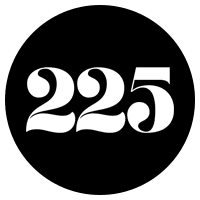Cosmetic procedures at a glance
Average Americans continue to spend money on plastic surgery. According to the American Society of Plastic Surgeons, almost 12 million cosmetic plastic surgery procedures were performed in 2007 (the most recent year for which statistics are available)—a 7% increase from 2006 and a 59% increase from 2000.
Numbers of surgical cosmetic procedures remained unchanged from the previous year, with more than 1.8 million procedures performed in 2007. Breast augmentation was the most popular cosmetic surgical procedure for the second year in a row. The top five surgical procedures were breast augmentation (348,000, up 6%), liposuction (302,000, unchanged), nose reshaping (285,000, down 7%), eyelid surgery (241,000, up 3%), and tummy tuck (148,000, up 1%).
Minimally invasive cosmetic procedures rose by 9%, to nearly 10 million procedures. With a hefty increase in demand, hyaluronic acid fillers (Restylane®, Hylaform®, Hylaform Plus® and Juvederm™) jumped from fifth most popular in 2006 to second most popular in 2007. The most popular minimally invasive procedure was Botox® (4.6 million, up 13% from 2006).
|
|
Here’s a guide to the most popular cosmetic procedures:
How much would your preferred procedures cost?
WOMAN:
FOREHEAD LIFT – $3,450-$4,000
BLEPHAROPLASTY ?(eyelid surgery) – $4,000-$5,600
OTOPLASTY ?(ear surgery) – $2,700-$5,000
RHINOPLASTY ?(nose reshaping) – $5,300-$6,100
FACELIFT – $6,800-$7,800
CHIN AUGMENTATION – $2,700-$4,100
UPPER ARM LIFT – $4,800-$6,300
BREAST LIFT – $4,900-$7,800
BREAST AUGMENTATION – $4,000-$6,000
TUMMY TUCK – $5,400-$6,600
LIPOSUCTION – $2,500-$6,000
BUTTOCK LIFT – $4,711*
LOWER BODY LIFT – $7,800-$10,000
THIGH LIFT – $3,500-$6,200
CALF AUGMENTATION – $3,206*
MAN:
FOREHEAD LIFT – $3,450-$4,000
BLEPHAROPLASTY ?(eyelid surgery) – $4,000-$5,600
OTOPLASTY ?(ear surgery) – $2,700-$5,000
RHINOPLASTY ?(nose reshaping) – $5,300-$6,100
FACELIFT – $6,800-$7,800
CHIN AUGMENTATION – $2,700-$4,100
UPPER ARM LIFT – $4,800-$6,300
PECTORAL IMPLANTS – $3,769*
GYNECOMASTIA (breast reduction) – $2,800-$4,600
TUMMY TUCK – $5,400-$6,600
LIPOSUCTION – $2,500-$6,000
BUTTOCK LIFT – $4,711*
LOWER BODY LIFT – $7,800-$10,000
THIGH LIFT – $3,500-$6,200
CALF AUGMENTATION – $3,206*
*Cost ranges represent only a general guideline to typical costs. Ranges were based on a survey of plastic surgeons in the Baton Rouge area and represent basic starting costs. Costs marked with a * represent the national average of surgeon’s fees (not including anesthesia, operating room costs, or other costs) according to the American Society of Plastic Surgeons. Fees generally vary according to actual patient situation, surgeon demand and region of the country.
Breast Augmentation
• Procedure: Enhance the size of breasts using inflatable implants filled with saline or silicone gel.
• Length: 1 to 2 hours.
• In/Outpatient: Usually outpatient.
• Side effects: Temporary soreness, swelling, change in nipple sensation, bruising. Breast sensitive to stimulation for a few weeks.
• Risks: Lack of implant permanence—surgical removal or replacement of the implants may be required to treat problems, including: deflation; the formation of scar tissue around the implant (capsular contracture), which may cause the breast to feel tight or hard; bleeding or infection. Increase or decrease in sensitivity of nipples or breast skin, occasionally permanent. Mammography requires a special technique. (Note: Some women have reported symptoms similar to those of immune disorders. Ask your doctor about these and other FDA concerns.)
Breast Lift
• Procedure: Raise and reshape sagging breasts by removing excess skin and repositioning remaining tissue and nipples.
• Length: 1 to 3 hours.
• In/Outpatient: Usually outpatient. Sometimes inpatient.
• Side effects: Temporary bruising, swelling, discomfort, numbness, dry breast skin. Permanent scars.
• Risks: Thick, wide scars; skin loss; infection. Unevenly positioned nipples. Permanent loss of feeling in nipples or breast.
Chemical Peel
Phenol and Trichloroacetic Acid (TCA)
• Procedure: Restore wrinkled, blemished, unevenly pigmented or sun-damaged facial skin, using a chemical solution to peel away skin’s top layers. Works best on fair, thin skin with superficial wrinkles.
• Length: 1 to 2 hours for full face.
• In/Outpatient: Usually outpatient. Full-face phenol peel may require admission for up to two days.
• Side effects: Both: Temporary throbbing, tingling, swelling, redness; acute sensitivity to sun. Phenol: Permanent lightening of treated skin; permanent loss of ability to tan.
• Risks: Both: Tiny whiteheads (temporary); infection; scarring; flare-up of skin allergies, fever blisters, cold sores. Phenol: Abnormal color changes (permanent); heart irregularities (rare).
Collagen/Fat Injections
• Procedure: Plump up creased, furrowed or sunken facial skin; add fullness to lips and backs of hands. Works best on thin, dry, light-colored skin.
• Length: 15 minutes to one hour per session.
• In/Outpatient: Outpatient.
• Side effects: Temporary stinging, throbbing, or burning sensation. Faint redness, swelling, excess fullness.
• Risks: Collagen: Allergic reaction including rash, hives, swelling, or flu-like symptoms; possible triggering of connective-tissue or autoimmune diseases. (A skin test is required before collagen treatment to determine whether an allergy exists.) Both: Contour irregularities, infection.
Eyelid Surgery
• Procedure: Correct drooping upper eyelids and puffy bags below the eyes by removing excess fat, skin and muscle.
• Length: 1 to 3 hours.
• In/Outpatient: Usually outpatient.
• Side effects: Temporary discomfort, tightness of lids, swelling, bruising. Temporary dryness, burning, itching of eyes. Excessive tearing, sensitivity to light for first few weeks.
• Risks: Temporary blurred or double vision. Infection, bleeding. Swelling at the corners of the eyelids. Dry eyes. Formation of whiteheads. Slight asymmetry in healing or scarring. Difficulty in closing eyes completely (rarely permanent). Pulling down of the lower lids (may require further surgery). Blindness (extremely rare).
Facelift
• Procedure: Improving sagging facial skin, jowls and loose neck skin by removing excess fat, tightening muscles, redraping skin. Most often done on men and women over 40.
• Length: Several hours.
• In/Outpatient: Usually outpatient. Some patients may require short inpatient stay.
• Side effects: Temporary bruising, swelling, numbness and tenderness of skin; tight feeling, dry skin. For men, permanent need to shave behind ears, where beard-growing skin is repositioned.
• Risks: Injury to the nerves that control facial muscles or feeling (usually temporary but may be permanent). Infection, bleeding. Poor healing; excessive scarring. Asymmetry or change in hairline.
Forehead Lift
• Procedure: Minimize forehead creases, drooping eyebrows, hooding over eyes, furrowed forehead and frown lines by removing excess tissue, altering muscles and tightening the forehead skin. May be done using the traditional technique, with an incision across the top of the head just behind the hairline; or with the use of an endoscope, which requires three to five short incisions.
• Length: 1 to 2 hours.
• In/Outpatient: Usually outpatient.
• Side effects: Temporary swelling, numbness, headaches, bruising. Traditional method: Possible itching and hair loss.
• Risks: Injury to facial nerve, causing loss of motion, muscle weakness or asymmetrical look. Infection. Broad or excessive scarring.
Male Breast Reduction
• Procedure: Reduce enlarged, female-like breast in men using liposuction and/or cutting out excess glandular tissue.
• Length: 1 hour or more.
• In/Outpatient: Usually outpatient.
• Side effects: Temporary bruising, swelling, numbness, soreness, burning sensation.
• Risks: Infection. Fluid accumulation. Injury to the skin. Rippling or bagginess of skin. Asymmetry. Pigmentation changes (may become permanent if exposed to sun). Excessive scarring if tissue was cut away.
Nose Surgery
• Procedure: Reshape nose by reducing or increasing size, removing hump, changing shape of tip or bridge, narrowing span of nostrils, or changing angle between nose and upper lip. May also relieve some breathing problems.
• Length: 1 to 2 hours or more.
• In/Outpatient: Usually outpatient.
• Side effects: Temporary swelling, bruising around eyes and nose, headaches. Some bleeding and stiffness.
• Risks: Infection. Small burst blood vessels resulting in tiny, permanent red spots. Incomplete improvement, requiring additional surgery.
Tummy Tuck
• Procedure: Flatten abdomen by removing excess fat and skin and tightening muscles of abdominal wall.
• Length: 2 to 5 hours.
• In/Outpatient: Either, depending on individual circumstances and extent of surgery.
• Side effects: Temporary pain. Swelling, soreness, numbness of abdominal skin, bruising, tiredness for several weeks or months.
• Risks: Blood clots. Infection. Bleeding under the skin flap. Poor healing resulting in conspicuous scarring or skin loss. Need for a second operation.
Liposuction
• Procedure: Improve body shape by removing exercise-resistant fat deposits with a tube and vacuum device. Can be performed using the tumescent technique, in which targeted fat cells are infused with saline containing solution with a local anesthetic before liposuction to reduce post-operative bruising and swelling. Common locations for liposuction include chin, cheeks, neck, upper arms, above breasts, abdomen, buttocks, hips, thighs, knees, calves and ankles.
• Length: 1 to 2 hours or more.
• In/Outpatient: Usually outpatient. Extensive procedures may require short inpatient stay.
• Side effects: Temporary bruising, swelling, numbness, soreness, burning sensation. Tumescent: Temporary fluid drainage from incision sites.
• Risks: Asymmetry. Rippling or bagginess of skin. Pigmentation changes. Skin injury. Fluid retention. Excessive fluid loss leading to shock. Infection.
Source: American Society of Plastic Surgeons, www.plasticsurgery.org. Note: Medical information such as the material in this article and on this site is not medical advice. Always consult a qualified medical practitioner for advice about your particular situation.
|
|
|

